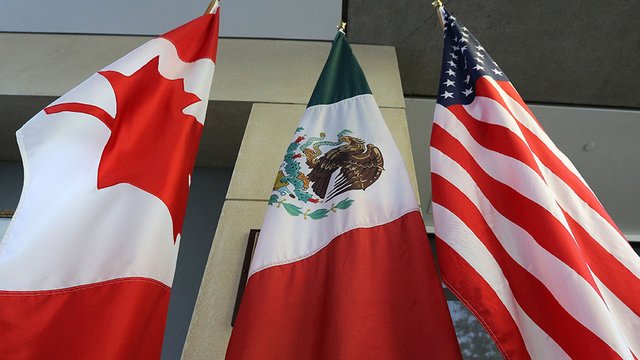
Pinar Cebi Wilber: How the USMCA benefits Ohio
President Trump’s skepticism about globalization’s benefits for average Americans resonated with voters in 2016, but many experts have been uneasy with the shift away from steadfast U.S. promotion of trade liberalization that has prevailed since World War II.
As it turns out, Trump’s actions have served to correct stubborn misconceptions about trade and highlighted the importance of staying engaged with our trading partners, even as we push for appropriate adjustments to current and future trade agreements. Nowhere is this better illustrated than with the North American Free Trade Agreement (NAFTA).
Last November, negotiators wrapped up talks on what is now called the U.S. Mexico Canada Agreement (USMCA) after nine contentious rounds of negotiations. The new agreement does not repudiate NAFTA but instead aims to modernize and re-balance our trade ties with Canada and Mexico in ways that are positive for Ohio’s businesses, farmers and workers.
The deep division and resentment stirred by trade have been especially pronounced in Ohio and other Rust Belt states, and NAFTA has become the “poster child” for free trade’s critics. But, in fact, NAFTA has quadrupled trilateral trade and benefited people in all three countries. Unfortunately, the pain caused by economic dislocation has obscured the facts about trade in general and NAFTA in particular. This has undermined the imperative to open new markets for Ohio’s manufacturers, agricultural interests and service companies.
Ohio has benefited immensely from NAFTA and other free trade agreements across multiple industries, and the USMCA will mean even more opportunities for business growth, job creation and economic development going forward.
Many Ohioans might be surprised to learn that as a result of NAFTA’s implementation in 1993, Canada and Mexico now purchase more of the state’s exported manufactured goods than the rest of the world combined — over $25.4 billion in exports in 2017 alone. In addition, while automation in manufacturing and strong competition from carmakers in Europe and Asia have created hardship for U.S. auto companies, trade with Canada and Mexico has helped this sector stay productive in Ohio. In fact, 82% of the state’s exports of automobiles and automobile parts are bound for Canada and Mexico.
In the automotive and other manufacturing industries, the USMCA’s changes on rules of origin and labor standards aim not only to help retain U.S. jobs but also ensure wages and working conditions improve for workers in all three countries. This change addresses the criticism that trade has created a game that pits workers against each other.
Likewise, in the agricultural sector, NAFTA has helped Ohio’s farmers, and the USMCA will mean locking in additional gains. Groups representing pork producers, cattlemen, poultry, wheat and dairy interests made a strong case for NAFTA and the USMCA in a letter to U.S. Sen. Rob Portman in late 2017 that stated, “Trade and investment with Canada support 308,700 jobs in Ohio and there are over 178,000 jobs in Ohio that depend on trade with Mexico.”
Agricultural trade with our NAFTA partners has become even more important because of the current trade war with China. According to data from the Ohio Development Services Agency, on average, China was Ohio’s No. 1 trading partner for certain agricultural products between 2016 and 2018, including soybeans, the state’s No. 1 crop. Ohio farmers were able to partially offset the negative effects of Chinese retaliation by increasing exports to Mexico. If the trade war continues, it will be especially important for Ohio’s 26,000 soybean farmers to continue to sell their output to Mexico.
Abandoning NAFTA could jeopardize between 64,300 to 127,670 jobs in Ohio. Other studies peg this number higher. On the other hand, with congressional approval of the revised agreement, the USMCA will not only help preserve jobs in the industrial and agricultural sectors. Its protections for intellectual property rights and reductions in red tape will also aid a range of small businesses and innovators in Ohio.
Trade has long been presented as a false dichotomy. With 95% of the world’s consumers living outside the United States and dozens of countries at work on completing new free trade agreements, the United States cannot afford to retreat. The U.S. can only work hard to ensure trade creates opportunities for as many people as possible. Ohio’s experience with NAFTA exemplifies how deeper and stronger ties with its neighbors have been a win-win proposition. The adjustments included in the USMCA will bring more balance to North American trade and create a variety of long-term benefits to communities across Ohio. Ohio’s lawmakers should unify to make sure this landmark trade agreement sees passage this year.
Wilber is the senior vice president and chief economist for the American Council for Capital Formation. She recently authored a new report, “NAFTA/USMCA: Past, Present And Future.”






